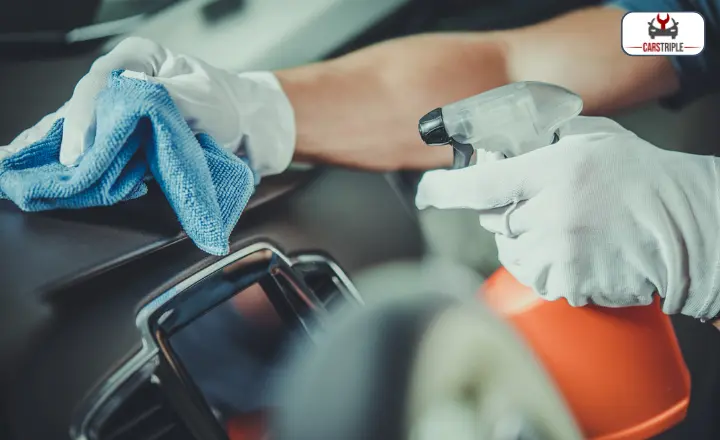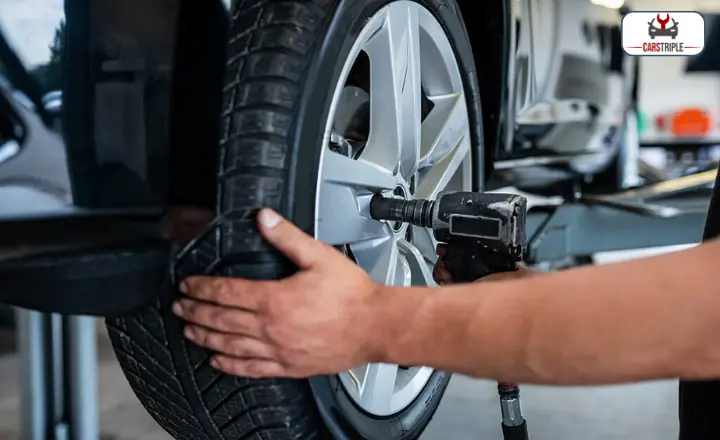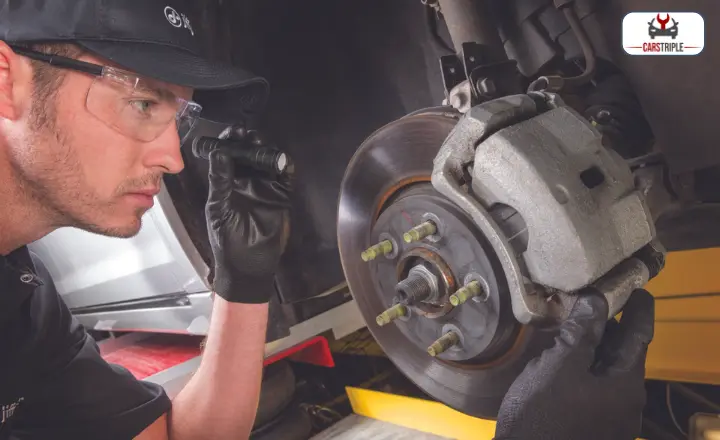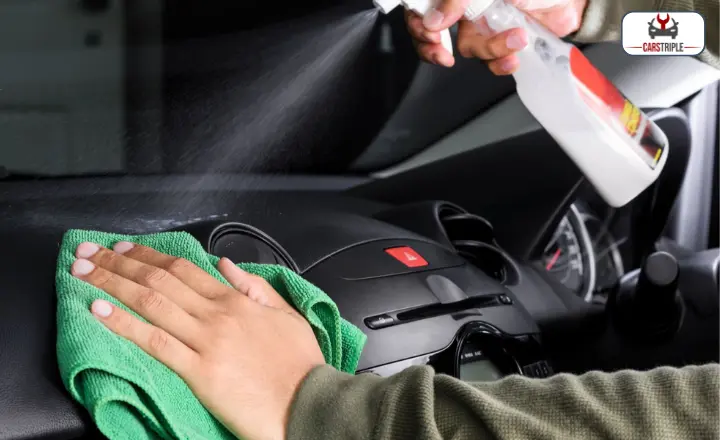TLC is a term you might have encountered if you are interested in cars and the automotive industry. TLC meaning cars, stands for “tender loving care” and refers to the maintenance and care that vehicle owners should give to keep their cars running smoothly.
Cars have become increasingly important as modern vehicles become more complex, with sophisticated electronics and computer systems that require specialist attention. This article will explore why TLC is essential for car owners.
Here are some simple steps to ensure your vehicle stays in top condition. We will also look at common problems when TLC is neglected, including breakdowns, poor fuel economy, and safety issues.
What Does TLC Mean in Cars?
TLC encompasses all the tasks and procedures necessary to keep a car running smoothly and safely on the road. It includes routine maintenance such as oil changes, tire rotations, brake inspections, and regular tune-ups.

Taking care of your car through regular tender loving care can help extend its lifespan and improve its overall performance. Regularly servicing your vehicle will also ensure that any potential problems are identified early on before they become significant issues, and proper care will also help maintain resale value.
Neglecting TLC in cars can lead to costly repairs down the line or even put you at risk of an accident due to mechanical failure. Car owners need to prioritize regular maintenance and preventative measures.
What does it include, TLC meaning cars?
Tender-loving care includes Oil Changes, Filters, Tire rotation, Light, Brake Pads, and more. We will explain these points below.
Oil Changes and Filters
An oil change involves draining the old motor oil from your vehicle and replacing it with fresh, clean oil. This process also includes replacing your old oil filter with a new one.
Experts recommend getting an oil change every 3,000 miles or three months. This interval may vary depending on the oil used in your car and how often you drive it. Oil changes are vital to maintaining the health of your engine and ensuring that your vehicle runs smoothly.
While many view an oil change as an unnecessary expense, neglecting to get regular oil changes can cost you more in the long run. Dirty motor oil can cause severe damage to your engine, leading to costly repairs or even complete engine failure.
Keeping up with regular maintenance, like oil changes and filter replacements, can extend the life of your vehicle and improve its overall performance on the road.
Rotate Your Tires
Tire rotation is an essential aspect of vehicle maintenance. It involves moving the tires from one position to another, ensuring they wear evenly and extend their lifespan.
Rotating your tires regularly will save you money on replacements and provide a safer driving experience. Most car manufacturers recommend a tire rotation every 6,000 to 8,000 miles or at least twice a year.

Driving habits and road conditions can impact how often you rotate your tires. If you drive in rough terrains or frequently carry heavy loads, it’s best to have your tires rotated more often.
Keep up With Your Car’s Fluids
The first fluid that comes to mind is engine oil – it lubricates engine parts and prevents wear and tear. You should change your oil every 5,000 miles or according to your manufacturer’s recommendations.
The coolant keeps the engine from overheating, rusting, corroding, freezing, or breaking. The transmission fluid ensures the smooth shifting of gears and cools the transmission system.
Check it regularly (approximately once a month) and change it every 60,000-90,000 miles, depending on your driving habits.
Check Your Light and Brake Pads
The light and brake pads are critical components that should never be ignored. These parts can mean the difference between an accident-free journey and a collision on the road.
Checking your car’s lights will help avoid accidents, especially during night driving. Ensure all your lights are working correctly, like headlights, taillights, turn signals, Master warning lights, brake lights, and hazard lights.

If any of these are not functioning correctly, consider replacing them immediately. You can also clean the lenses of the headlights to improve visibility and ensure they emit a bright light.
Brake pads are equally critical because they play a significant role in stopping your vehicle safely. Over time, brake pads wear out due to friction from pressing against the rotors when braking. Before this happens, check them regularly for thickness and signs of wear, such as grooves or cracks on their surface.
Bounce Test
To perform a bounce test, go to each corner of your vehicle and push down on it as hard as possible. Release the car and observe how long it takes to return to its original position.
If the car bounces more than two times before settling, then there may be an issue with the shocks or struts. This could lead to poor handling, longer stopping distances, and reduced stability when driving at high speeds.
When performing this test, it’s essential not to damage any part of your vehicle’s body, as it can lead to costly repairs.
Clean the Exterior Part of the Car
Regular cleaning of the exterior part of your car is crucial for its overall maintenance. Not only does it enhance the appearance of your vehicle, but it also helps to prevent damage caused by dirt and debris. Giving your car some Tender Loving Care is essential to cleaning its exterior regularly.

Start by washing your car using a mild soap solution and a sponge or soft cloth. This will help remove any dirt or grime accumulated on the surface. After washing, rinse thoroughly with clean water and dry using a soft towel or chamois. It’s important to avoid using harsh detergents as they can strip off the wax coating on your car’s paintwork.
How Much Does Car TLC Cost?
The make and model of the car play a significant role in determining how much tender loving care will cost. Luxury or high-performance cars typically require more expensive parts and specialized mechanics, which can significantly increase the overall maintenance cost.
The average cost of regular maintenance for a vehicle ranges between $550 to $850 annually. This figure includes routine services such as oil changes, tire rotations, filter replacements, and tune-ups.
The cost may vary depending on the make and model of your vehicle as well as its age and mileage. Other factors that can affect the price include your location and the level of service you choose.
The location also affects the cost of TLC for cars. Urban areas often have higher labor rates due to increased service demand, while rural areas may have limited access to specialized mechanics or parts.
What Does TLC Stand For Mechanical?
During routine maintenance, mechanics will inspect and clean various parts of your car to ensure they are working correctly. They may also replace damaged or worn-out parts to prevent further damage and keep your vehicle running smoothly.
When a mechanic advises you to give your car some TLC, they suggest that you take good care of it by following their recommendations for maintenance and repairs.
The benefits of giving your car some TLC cannot be overstated. Regular maintenance can extend the life of your vehicle, improve its fuel efficiency, and reduce the likelihood of breakdowns and costly repairs.
Conclusion
The TLC meaning cars, is a phrase that represents the care and attention that car owners should give to their vehicles. Regular maintenance and upkeep are essential in prolonging the lifespan of a car and ensuring its optimal performance.
TLC also means taking responsibility for our environmental impact by driving responsibly and reducing emissions. By showing our cars some loving care, we can save money in the long run and contribute to a cleaner planet. We hope you will get your answer about TLC for cars.
FAQ’s
Do You Need TLC for Taxi?
TLC for a taxi is unnecessary, but it can make the ride more pleasant. Try to relax and enjoy the ride, and let the driver do his or her thing.
What is the process for caring for my car?
Regularly check fluid levels, brakes, and tires; change oil and filter at 7,500 or every 3,000 miles. Check air pressure regularly, and inflate the tires to the correct pressure if it’s low.
